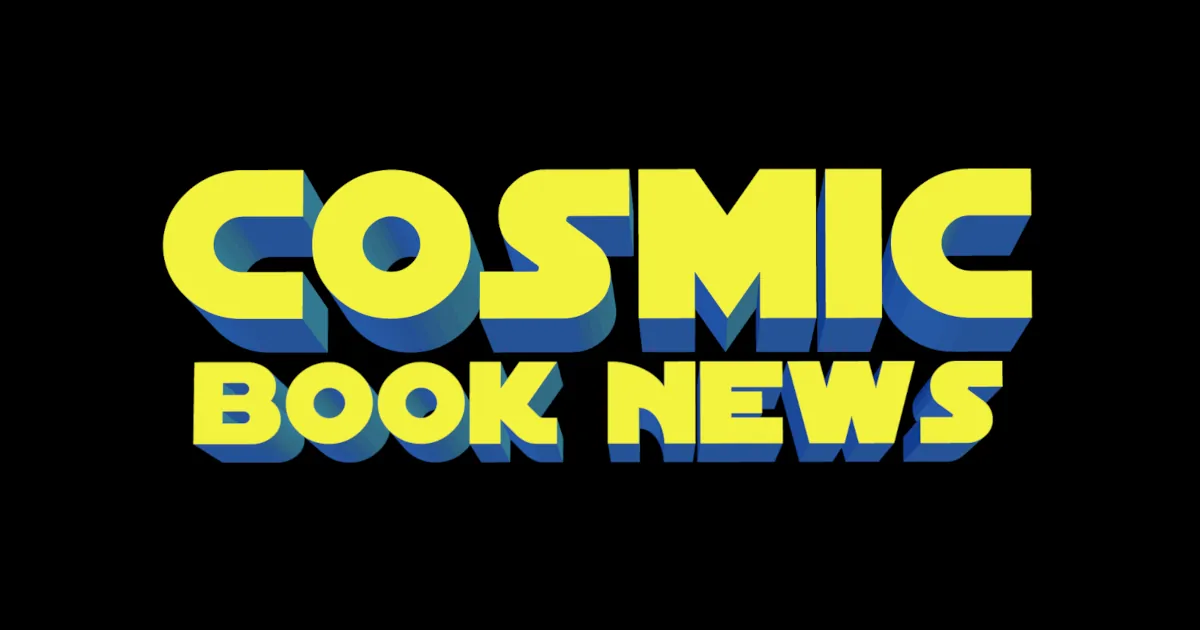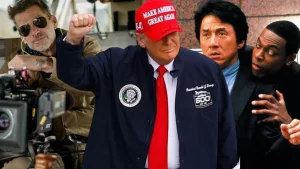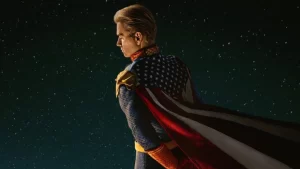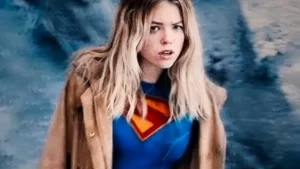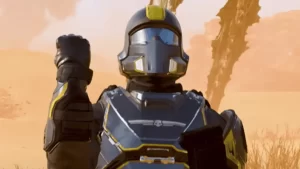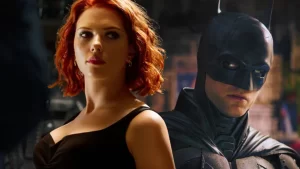A Tale of Two Creative Teams
An Analysis of the Power Girl Series and Why No One Can Figure This Character Out
By: Lawrence Napoli
Power Girl, as a character, can best be described as an NBA lottery draft pick: insanely popular and highly coveted based purely on potential and nothing more. If we look at her statistics as a comic book heroine, the potential is justified. She shares lineage with Superman and therefore all of his invulnerabilities, has the body of a goddess that highlights her buxomly grandeur, is blond and happens to be a smart ass. As far as female comic book characters are concerned, Power Girl represents the perfect super-woman-fantasy for geeks around the globe. So the question is why isn’t she more relevant in the DCU? Why can’t her stories send the same shock waves through the established fiction as those of her male counter-parts? Is it because she happens to be sans kick-stand? Is it because her character model is flawed? Is it because she is simply being mishandled like Shaq trying to crossover dribble? The answer is: all of the above.
The first problem lies in the “statistics” I refer to in the previous paragraph. Everything about the physical look of her character and general demeanor of her personality has been carbon copied with miniscule adjustments to create the vast majority of female characters in comic books. Make no mistake, this is not a call to arms to begin producing more homely heroines; merely a warning. If your main character type is common, the story that is told better not be, otherwise the only driving appeal for the story will be varying exposure of cleavage which only has the rest of DCU, Marvel U., Hollywood films, Playboy, Penthouse and internet p-rn to compete with. Thus, I present Power Girl: a character I so desperately want to fall in love with, but just can’t get past her ridiculous stories and utter irrelevance.
I cannot tell a lie. When I purchased my first issue of the Power Girl series, I was seduced by the beautiful twins. 50% of a comic book’s appeal is the artwork and if anyone tells you that looks don’t matter at all, they’re ugly, period. Amanda Conner can pencil some sleek and sexy curves. I interpret her art style as 25% homage to Animé, 25% American-hard-lines and 50% Victoria’s Secret. This combination is obviously quite flattering to Power Girl herself, but I found that it also communicates two distinct tones that compliment the initial story telling of the series perfectly: levity and optimism. Conner’s backgrounds are not overly detailed but often find one aspect of the scenery to be as large as life as the characters she draws. As for her characters, Conner’s primary strength lies in penciling faces and more specifically, the eyes on those faces which display the appropriate mood in every single panel. In addition, I appreciate Conner’s ability to draw a physically imposing main character who happens to be a woman without accentuating ‘roided-out musculature within the body art. She does this by applying those hard lines to Power Girl’s frame and almost always has a shorter character or object within the frame to highlight PG’s dominant stature.
The story that was conceived for the first 12 issues of Power Girl by Justin Gray and Jimmy Palmiotti was most definitely not what Ain’t It Cool News described as “flawless” in August 2009. Out of the entire library of villains in DCU, Ultra-Humanite was chosen to be Power Girl’s signature antagonist and the focal point of the superhuman fisticuffs. I do not claim to be a DC comic aficionado, but I cannot recall any significant event or threat that this Gorilla Grod wanna-be has been a part of in recent history. On paper, his blend of intelligence, tech and physicality matches up well with PG, but presents no better, nor intriguing, a match up than Solomon Grundy, some random renegade Lantern ring-bearer or even a completely new character. The real question is why Humanite? Gray and Palmiotti’s answer is revealed in Humanite’s desire to permanently place his “perfect” mind into PG’s perfect body which isn’t terrible, but also not entirely original. Where’s the subtext to this dubious motivation? Where’s the acidic blood between these characters? When PG temporarily overcomes Humanite, that conflict goes into stasis in order to usher in new and forgettable antagonists in a crude attempt to diversify PG’s adventures: Zoraida the Elf Queen? Jersey Shore tramps from space? Vartox of Valeron? Satanna and her animal army? Suffice it to say that the super human action for these 12 issues was formulaic at best, perhaps parody taken a bit too far and a tad insulting to the reader’s intelligence.
Despite the varying degree of absurdity, I was compelled to read on because what was fascinating about the Power Girl story is the significant quality and page count dedicated to developing her personal and professional life outside the spandex. I know what you’re thinking: Clark Kent doing research in a library is not nearly as appealing as his exploits while soaring through the skies. The main reason for that is because writers for the Man of Steel never really committed to that aspect of his life as it was generally treated as an inconvenient chore to maintain the old secret identity. This is not the case with Power Girl, aka Kara Zor-L, aka Karen Starr: the woman in charge of Starrware Labs, a company devoted to next generation research and development that is not subsidized by the government or the military. Yes, PG’s day job is a tad higher brow than that of a newspaper reporter, but this is a very good thing. When fiction increases the stakes, writers broaden subplots, increase the cast of relevant characters and add layers of depth to one’s protagonist. Every issue has anywhere between 1/4 to 1/3 of the page count devoted to this aspect of Kara’s life and the level of interest and interaction she shares with her employees as well as the leadership she displays in this corporate environment proves to the reader that her civilian life matters to her as much as her super hero work.
The key element that ingratiated Kara to me while reading about her civilian interactions was the sincerity of the personal relationships she formed with several individuals, most notably the meta-humanoid known as Terra who has earth manipulation powers. Their relationship seems like classic mentor/student at first glance because Terra is clearly new to the super hero game as well as normal human interactions in the United States of today. Terra, however, is neither coerced nor expected by PG to participate in super hero duties akin to a Robin-type, but she will jump in to help her friend if she happens to be present at the time of hostilities. These two are like sisters separated by a good deal of life experience who completely respect each other’s personal space and aspirations and will go the extra mile to simply be there for the other with zero agenda. Yes, I realize that the saccharine level has just shot up 100% for this article, but buying into the sincerity of PG’s genuine personality is not difficult at all seeing how the writing is consistent with how she interacts with everyone else. The relationships she has with her key employees at Starrware are just as rewarding as well as providing an excellent source of comic relief that revolves exclusively around Kara’s voluptuous appeal. All these elements combine to produce a fairly simple tail of a super strong, super nice, kick-ass super babe trying to be as useful in the real world with her intelligence, charisma and resources as she is with her fists.
Fast forward to issue 13 of the Power Girl series and the readers find a complete overhaul of the creative team and with that a completely new art style by Sami Basri and an entirely different tenor to the plot delivered by Judd Winick. There is no drop off in the quality of the penciling, but it features a more mature looking Power Girl who continues to “bust out” in all glory with her costume, but tones down the sex appeal at the office with more business appropriate attire. The same goes for the storyline which places more emphasis on Kara, the super hero much more than the civilian with an edgier arc that is trying to increase her status by making a direct connection to the Brightest Day events which continues to dominate several DC titles. Issues 13-21 see Power Girl leading a personal investigation to locate and capture Maxwell Lord; recently resurrected by the white lantern and murderer of the Ted Kord Blue Beetle. The problem is that Kara is somewhat immune to Lord’s mind manipulating powers to the extent that she still remembers him and his evil deeds, but she cannot convince anyone else in the Justice League or Society that this person even exists.
There is no question that this plot outclasses everything that was presented in the first 12 issues in all the important ways: better antagonist with a personal connection to the protagonist, an escalating and focused threat level, genuine mystery and a direct connection to the most important plot element shared by most titles printed by the publisher. I particularly enjoy how Power Girl is now teaming up with both Batmen (Wayne and Grayson) to specifically go after Max Lord. At the same time I realize that this is not the same PG. I’ve always had an appreciation for PG’s cuteness despite being drawn like a sexual Adonis. There is a certain appeal that comes with a naive girl that just wants to do some good and have a little fun doing it. But this character model has ridden out its popularity with readers who clearly want Kara to start behaving as bold as her physicality and when a character grows, growing pains are inevitable.
Despite the improvements to PG’s super hero conflicts, there has only been one battle in the last 8 issues that has been drawn with the same intensity of Amanda Conner’s art. I refer to the fight against Divine: a brunette, evil clone of Power Girl and perhaps the least surprising plot twist for a comic book character in this day and age. Gone is the personal intrigue and investment in Kara’s personal/professional life. Gone is Terra, Power Girl’s best friend in Earth-One’s timeline and all the fun antics they got into. Yes, Power Girl is maturing, but as a character, she still clings to a glaring weakness that prevents her from being on the same level of a Green Lantern, Flash or Superman. Writers still force her to use more important characters to facilitate her goals. I love drawing her close to the Wayne Bat Family (I might even be talked into buying an affair between her and Grayson), but this strategy is a huge crutch and a perfect example of not taking risks in writing. Why create a mystery when Batman is going to solve it for you? Why challenge an invincible villain when Superman will step in to make him or her submit?
I hate to compare Power Girl to Wonder Woman, but the similarities are there: sexy bad a– babes that no one could care less for. For Power Girl to avoid Wonder Woman’s fate, she must be written as Power Woman. She must get into a serious conflict that she faces alone. She must have some signature adventure that changes her personality in a lasting way. She must also find a way to reconnect with the significance of her civilian life and expand on her unique charisma as the girl next door who isn’t blowing you off and actually paying attention. If someone would accept the challenge of bringing all of these elements together in the Power Girl series, that would be one hell of a book to read. If Geoff Johns is reading this, you are more than welcome to make me an offer, sir.

